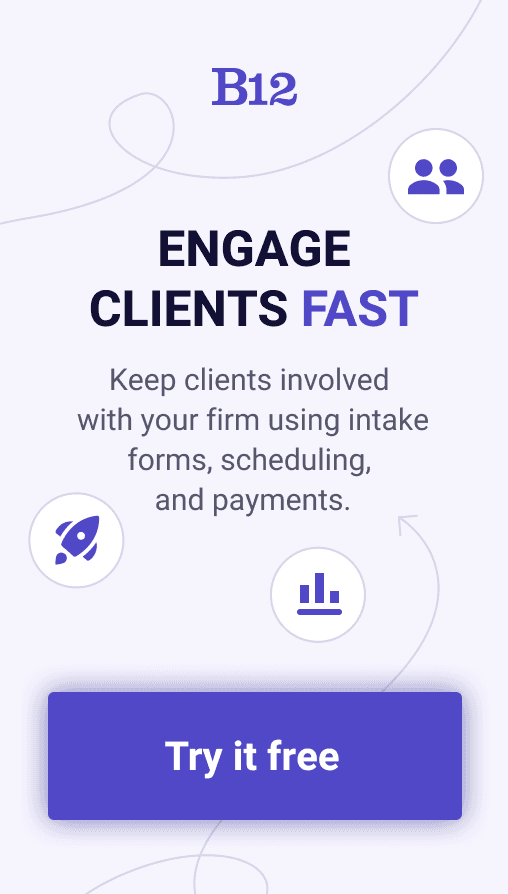Build an AI website in 60 seconds
AI generates your personalized website instantly with built-in scheduling, payments, email marketing, and more.
Start for free
Best practices for your website's online payment form

A user-friendly payment form can help ease the checkout process and improve customer retention. Meanwhile, a poorly designed payment form can result in lost sales, technical issues, and a negative impact on the overall user experience.
In this blog post, we'll go through the significance of creating a user-friendly payment form and explore different best practices for optimizing it so your consumers have an easy, secure, and positive shopping experience.
Why should you have user-friendly online payment forms?
Online shopping has revolutionized how people buy products, and the convenience of ecommerce has made online transactions a more attractive option for both consumers and businesses. It's the same for service businesses that list their services and prices online, and accept online payments for services rendered.
As a result, the efficiency and effectiveness of an online payment form have become a crucial aspect of any e-commerce business. A user-friendly payment form can ensure a smooth transaction process, enhancing user satisfaction, increasing customer retention, and boosting revenue.
However, designing an effective payment form is a challenging task. The form must be simple, secure, mobile-optimized, and easy to navigate. A poorly designed payment form can frustrate customers, increase cart abandonment rates, and hurt the brand's reputation. Therefore, online firms must pay close attention to the design of their payment forms and ensure that customers can utilize them easily.
How to create a great payment form
Whether you are a small business owner just setting up a shop or a large enterprise looking to optimize its payment processing, these tips will help create online payments that elevate the customer experience. So let's dive into how to create a great payment form!
Keep it simple: Designing an efficient payment form
A payment form template is one of the most important aspects of an ecommerce website. It is the portal through which your customers make transactions and is a key component in the user experience. A good payment form should be efficient, secure, easy to use, and assist users if necessary. This section will discuss some essential tips for designing a user-friendly payment form.
The first tip for designing online forms is to keep them simple. A payment form should be clear with information not necessary for the user to transact. It should be limited to only the essential fields required to complete the payment process, such as name, contact information, and payment details. Excessive information can overwhelm users and lead to confusion or frustration.
Secondly, use clear and concise language in your payment form. Make instructions easy to understand and avoid using jargon or technical terms that may confuse users. Avoid ambiguity in your form, and provide explanations where necessary. This will help your users navigate the payment process easier and lead to fewer errors during the checkout process.
Thirdly, visual hierarchy is essential in designing an efficient payment form. According to the visual hierarchy concept, elements on a webpage are shown in the order of their significance or relevance to the user. The most crucial fields should be at the top of payment forms, and the least crucial fields should be organized in descending order. This lets users focus on the most important fields, leading to a more efficient payment process.
Finally, it's essential to design your payment form in a way that is consistent with your branding. The form should match the aesthetic of your website and use consistent and familiar symbols, colors, and fonts. Consistency in design improves user experience by building brand trust and recognition. Users are more likely to trust and engage with a site if they find it visually pleasing and familiar.
Security measures: Ensuring safe transactions
In the digital age, security is paramount, especially regarding online transactions. Businesses that accept online payments must consider and adopt strict and comprehensive security measures to protect users' sensitive information. A data breach could result in a business's trust loss, accompanied by financial and legal ramifications. Therefore, businesses should prioritize ensuring they build payment forms and payment gateway that are safe from all malicious attacks.
One way to secure online payment transactions is by utilizing encryption technology. Encryption technology utilizes mathematical algorithms to safeguard sensitive data by converting it into unreadable code only authorized individuals can decode. Businesses can secure customers' credit/debit card information and personal details from illegal access or hacking attempts by employing encryption.
Another vital way to keep online transactions safe is to incorporate authentication steps into the payment process. For instance, a two-factor verification, which requires users to input an additional code sent to their registered phone number or email account, adds an additional level of security. It ensures that only the rightful owner of the transaction is authorized to complete it.
Lastly, businesses must offer transparent information about the security measures they've adopted on their website. Displaying such details can instill users' trust in the online transactions' authenticity, thereby boosting users' confidence in completing a transaction. It will assure users that their sensitive information is well protected and they can transact online safely. In conclusion, consider robust security measures while designing the payment form and display this information on the website to give the user peace of mind while transacting online.
Feedback and support: Assisting users
The importance of feedback and support must be considered when designing a user-friendly payment form. Users rely on clear instructions and assistance when trying to complete a transaction. Providing accessible help and support channels is crucial to ensure users feel safe and confident throughout the process.
One effective way of supporting users is through live chat or chatbots. These features allow customers to ask questions and receive prompt responses. Live chat also helps customers save time and quickly find the necessary information, without navigating through lengthy support pages.
Another important aspect of assisting is by offering informative error messages. Users may need to be corrected when completing a payment form, so ensure the error message is understandable and useful. The message should explain the error clearly and offer a solution to the problem, such as correcting the inputted data.
Lastly, user feedback is essential to improving the payment form's design and usability. User feedback will help reveal issues that need to be addressed or areas that need improvement. Such feedback helps companies continue to grow and support improvements that cater to their customers' needs. Therefore, creating surveys or feedback forms and analyzing users' responses will ensure that the payment form for recurring payments continues to meet its customers' needs.
Mobile-optimization: Designing for small screens
When designing your payment form, it's critical to consider the mobile user experience. The form must, above all, be simple to read on a small screen. It's crucial to pick a font size that people can see comfortably and to avoid using tiny, awkward buttons that are challenging to click precisely on a touchscreen.
Another key aspect of mobile optimization is to ensure the online payment form is mobile-friendly by using a responsive design. This means that the form templates' layout and design should adapt to the screen size of the device it's being viewed on. Testing the form's appearance and usability across various screen sizes and devices is crucial because a form that appears wonderful on a desktop computer may be entirely unusable on a smartphone.
Using mobile wallet technology is one method of streamlining the mobile payment process. PayPal, Google Wallet, and Apple Pay are all common choices. By offering these payment options, users can skip filling out payment and shipping information and use their mobile device's digital wallet to complete the transaction. This saves the user time and guarantees a quick and easy payment process.
Furthermore, ensuring the online form is optimized for touch input is important. To accommodate touch input, designers should consider building larger input fields and buttons and increasing the whitespace around interactive elements. This makes it easier for users to input their payment details and tap through the checkout process. With the right design considerations, a mobile-friendly payment form can result in fewer abandoned carts and increased customer satisfaction.
Optimize your online payment form with B12
In conclusion, optimizing your payment form is crucial to creating a positive user experience and increasing conversion rates. One important aspect of optimizing your payment form is regularly testing it for usability and functionality. You can use tools like heat maps, A/B testing, and user feedback to identify improvement areas and make necessary changes. Consistently monitoring your payment form's performance will help ensure it remains optimized and effective in the long run.
Another significant aspect of optimizing your payment form is ensuring it aligns with your brand and business goals. Your payment form should reflect your brand's style and tone and provide a seamless experience that enhances your brand image. Additionally, your payment form should be designed with your business goals, such as increasing sales, minimizing cart abandonment, and improving customer service.
Finally, staying up-to-date with the latest trends and technologies in payment form design and security measures is crucial. As technology changes and evolves, so do the expectations of users and merchant requirements. By staying informed and adapting to changing trends, you can ensure your payment form remains optimized and effective in the fast-paced digital world.
You can easily get high-quality client intake forms, online payment forms, and invoicing built into your online presence with B12. Launch a professional, branded website in 30 days or less with everything you need to attract, win, and serve clients. Start today!
Attract, win, and serve more clients
Receive helpful resources directly to your inbox to help you succeed online.
Draft your site in 60 seconds
Get an AI website made specifically for you that's free to launch.
Start for free ✨No credit card required
Spend less time on your website and more time growing your business
Let B12 set up your professional online presence with everything you need to attract, win, and serve clients.





